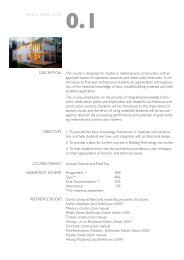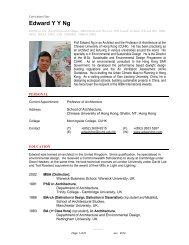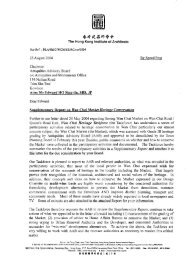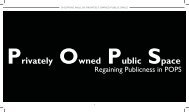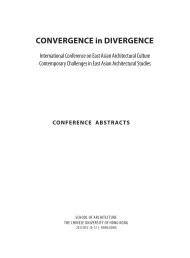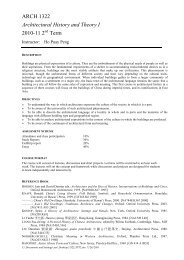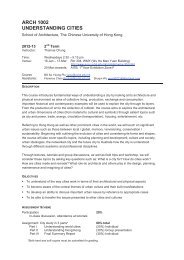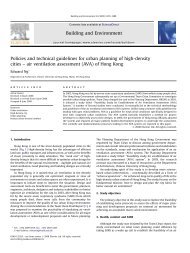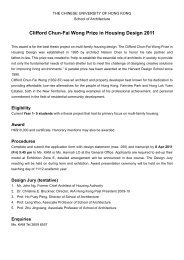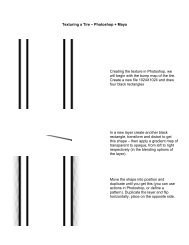Riyadh - School of Architecture
Riyadh - School of Architecture
Riyadh - School of Architecture
Create successful ePaper yourself
Turn your PDF publications into a flip-book with our unique Google optimized e-Paper software.
ARCH 3424 BUILD TECH IIIKing Abdullah University <strong>of</strong> Science and Technology (KAUST)ENERGYBioclimatic DesignThe climate on the site is very harsh with high average temperatures andhumidity levels. Harsh morning and evening sun light shine from thenortheast and northwest. Shading and orientation can be made.The prevailing wind direction in the northern Red Sea is 6 m/s north-northwesterlythroughout the year. There is also wind coming directly from theRed Sea in a northeasterly direction.The compact floor plan allow natural daylighting strategies for all outdoorspaces and selected interior spaces to lower the lighting demand.Building orientations limit harsh eastern and western exposure and haveprevailing Red Sea winds to act as a cooling mechanism.Green Strategies• Solar Cooling Method- Orient the building properly• Non-Solar Cooling Method- Use siting and topography to enhance summer breezes• Photovoltaics- Use a photovoltaic (PV) system to generate electricityStructureExteriorCompleteMATERIALSChan Doi Yan 115501678621% <strong>of</strong> the material is recycled38% comes from within 500 miles <strong>of</strong> the siteMaterials including:Terra-cotta, stone, glass and stainless steel (shared set <strong>of</strong> building enclosure)As there is high salinity, architects cannot use much steel(highly corrosive)so they use precast concrete.They also use aluminium in shading <strong>of</strong> ro<strong>of</strong> and special space-frame structures.Stone plinth:made <strong>of</strong> limestone quarried and crafted across the Red Sea, in EgyptGreen Strategies• Design for Materials Use Reduction- Consider the use <strong>of</strong> structural materials that do not need application <strong>of</strong>finish layers• Plan for Materials Longevity- Use materials and systems with low maintenance requirements• Materials and Wildlife Habitat- Use wood products from independently certified, well-managed forestsfor rough carpentry• Transportation <strong>of</strong> Materials- Use materials that are sourced and manufactured in the local areaThe ro<strong>of</strong> <strong>of</strong> the KAUST is covered in large solar panels(solar-photovoltaic and solar-thermal panels)can provide 7.8% <strong>of</strong> the total energy required to operate thecampusComfort zone study



